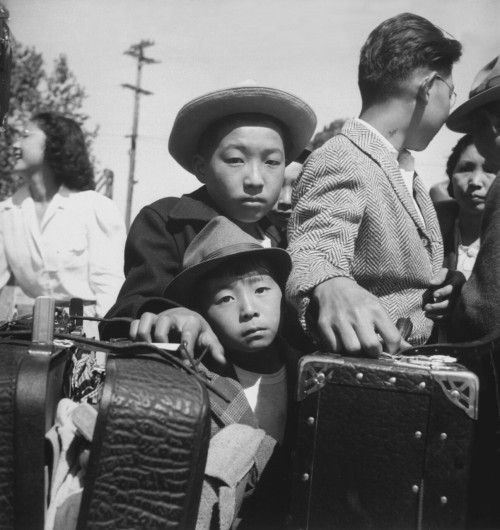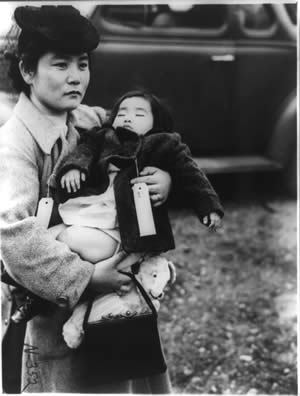canadianbeerandpostmodernism:In 1942, shortly after the U.S. entered World War II, President Rooseve
canadianbeerandpostmodernism:In 1942, shortly after the U.S. entered World War II, President Roosevelt issued Executive order 9066, which declared areas of the country military zones. This led to the forced relocation of Japanese-Americans to internment camps. The U.S. War Relocation Authority hired photographer Dorothea Lange to document the relocation process in the Pacific Coast area.Lange’s earlier work documenting displaced farm families and migrant workers during the Great Depression did not prepare her for the disturbing racial and civil rights issues raised by the Japanese internment. Lange quickly found herself at odds with her employer and her subjects’ persecutors, the United States government.To capture the spirit of the camps, Lange created images that frequently juxtapose signs of human courage and dignity with physical evidence of the indignities of incarceration. Not surprisingly, many of Lange’s photographs were censored by the federal government, itself conflicted by the existence of the camps.Over 100,000 Japanese American men, women, and children were relocated and detained at these camps. ( )… This internment is now recognized as a violation of their human and civil rights. In 1980, the US government officially apologized and reparations were paid to survivors.The true impact of Lange’s work was not felt until 1972, when the Whitney Museum incorporated twenty-seven of her photographs into Executive Order 9066, an exhibit about the Japanese internment.ASX Magazine -- source link
Tumblr Blog : canadianbeerandpostmodernism.tumblr.com








